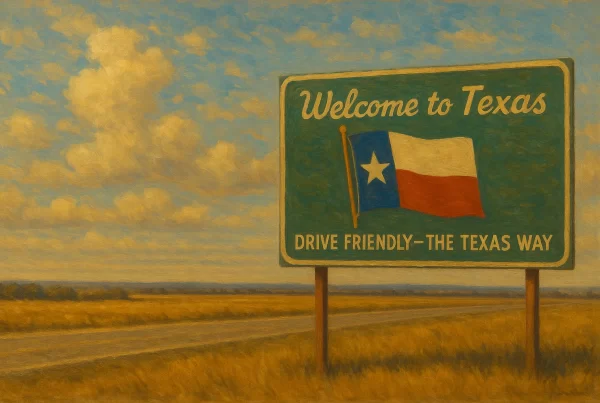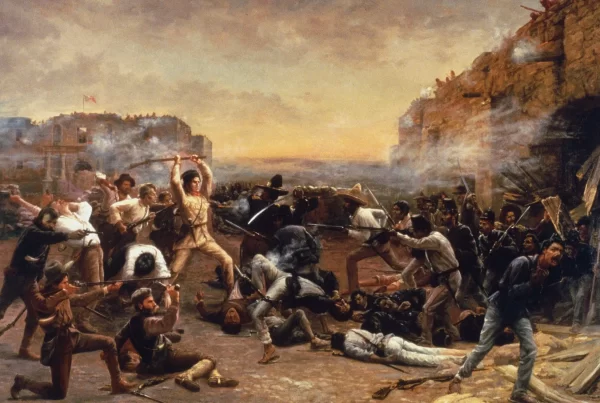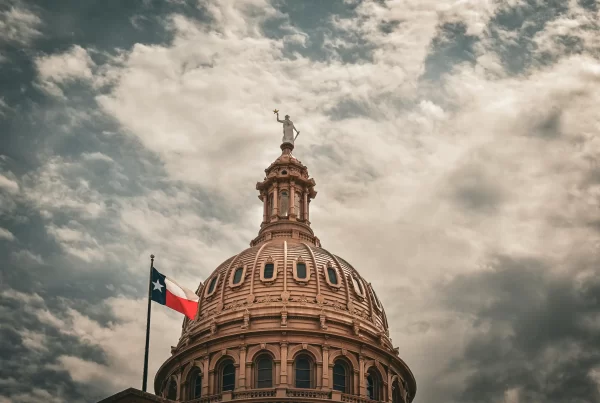The Texas State Capitol is a building in Austin that serves as the seat of state government. It houses offices and meeting spaces for the Texas Legislature and the Governor of Texas.
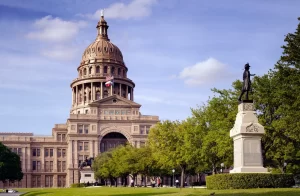
Built from 1882 to 1888, with an underground extension completed in 1993, the Capitol was designed by architect Elijah E. Myers in a Renaissance Revival style, blending classical and contemporary elements of the time. It features a distinctive dome, modeled after the U.S. Capitol building, and a rotunda adorned with murals depicting the history of Texas.
The Texas State Capitol stands 302.64 feet tall, making it not only taller than the U.S. Capitol but also the tallest state capitol building in the United States. Its floor space, including the extension, is larger than any other state capitol. The Capitol has a pinkish hue because of the red granite used in its construction, giving it a striking, unique appearance.
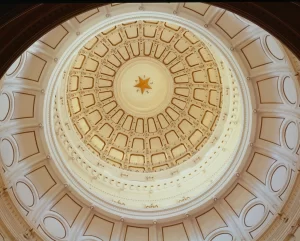
Inside the Capitol, visitors will find lavish interiors, including ornate marble floors, a grand rotunda, and a series of murals that celebrate Texas’ history and its struggle for independence.
The House of Representatives uses the western wing of the building, while the Senate uses the eastern wing. Formerly, the Texas Supreme Court also met in the building, but now the court convenes in a separate, nearby structure.
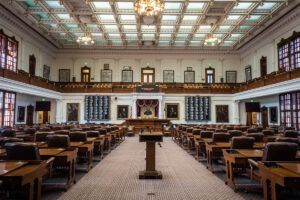
In addition to the legislative offices and hearing rooms, the Texas Capitol houses the Legislative Reference Library, which provides research and reference services to the state’s legislators and their staff. Formerly, the Texas Supreme Court met in the building, and other state offices were also based there, but these have now moved to their own facilities. The Capitol is mostly now just for legislative use.
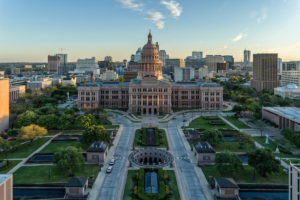
The Capitol Extension, located under the northern Capitol grounds, houses lawmakers’ offices, a cafeteria, gift shop, and hearing rooms. Skylights provide natural lighting in the corridors of this underground complex, though the hearing rooms where much of the legislature’s business takes place are windowless. The Speaker of the House, Lieutenant Governor, and some senior lawmakers have their offices in the Capitol itself, but most have offices in the Capitol Extension.
Visitors to the Capitol can explore its expansive grounds, which are beautifully landscaped and home to more than 20 monuments and statues. The grounds surrounding the Capitol feature many statues and monuments. For example, there are monuments commemorating the defenders of the Alamo, Tejano culture, and African American history.
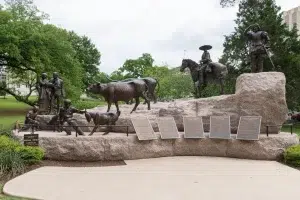
However, the Capitol also includes several statues of Confederate generals and soldiers—figures that have sparked considerable controversy in recent years. Ongoing debates over these statues focus on their symbolic significance and the role of such monuments in public spaces.
The Capitol also offers self-guided tours through the Capitol Visitor Center, where historical exhibits are on display, and free guided tours are available through the State Preservation Board.
The Capitol plays an important role not just in Texas history but in the present day, as it is the site of regular legislative sessions, special hearings, and press conferences. As a center of lawmaking and decision-making, it influences policy at both the state and national levels.
The Texas State Capitol has also made appearances in numerous films, TV shows, and documentaries, thanks to its iconic design and significance in Texas politics and history.

Timeline
| Year/Date | Event/Milestone | Notes |
|---|---|---|
| 1839 | Austin designated capital of Texas | First Capitol was a log structure surrounded by a stockade. |
| 1853 | Second Texas Capitol completed | A limestone building, later destroyed by fire. |
| 1881 | Old Capitol destroyed by fire | Fire led to urgent need for a new Capitol. |
| 1882 | Construction of current Capitol begins | Foundation work began using Texas Sunset Red granite. |
| 1888 | New Texas State Capitol dedicated | Celebrations marked completion of the building. |
| 1891–1925 | Early monuments added | Alamo Heroes, Volunteer Firemen, Confederate Soldiers, Terry’s Texas Rangers, Hood’s Brigade, Texas Cowboy monuments. |
| 1951–1999 | Veterans and Peace Officer memorials installed | Spanish–American War, WWI, WWII, Korea, Vietnam, and Peace Officers memorials added. |
| 1970 | Capitol listed on National Register of Historic Places | Recognized for its historical importance. |
| 1983 | Fire damages Capitol; State Preservation Board created | Fire in east wing led to preservation-focused management. |
| 1989–1995 | Capitol Extension built and full restoration completed | Major restoration preserved the historic structure and added underground facilities. |
| 2012–2018 | Major new monuments added | Tejano Monument, Vietnam Veterans Monument, African American History Memorial, and others. |
